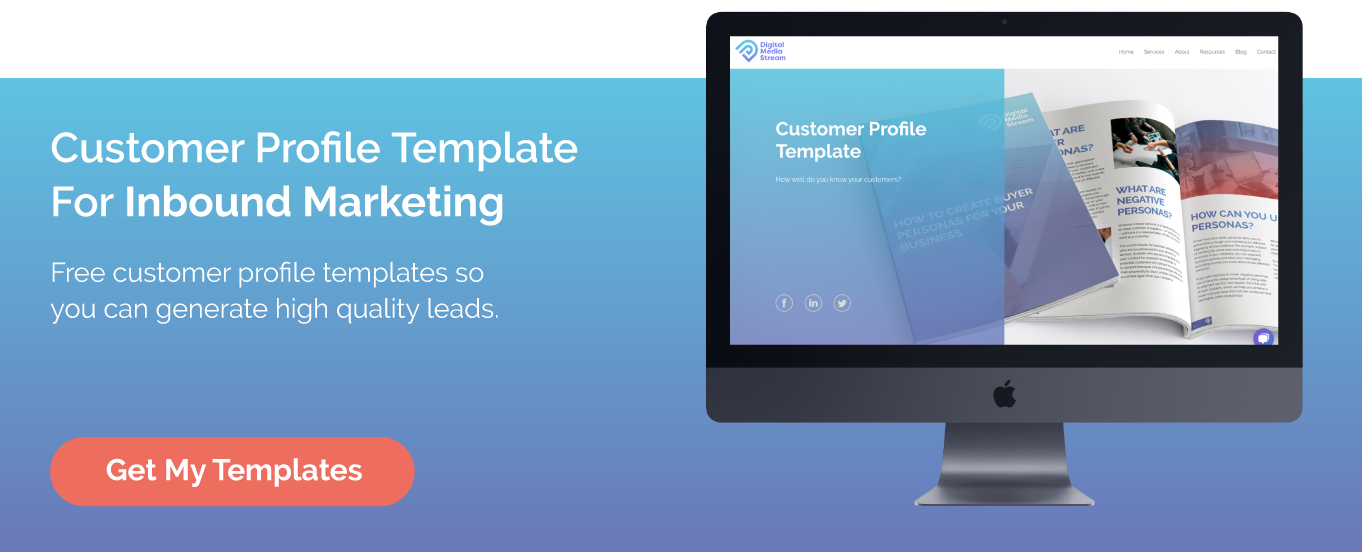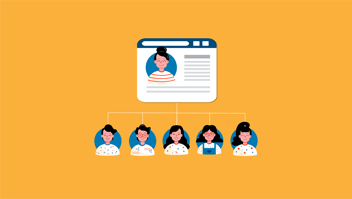As an Account Manager, at a Digital Marketing Agency focused on delivering results (and as a HubSpot Platinum Solutions Partner practising the Inbound Methodology), one of the first questions I ask potential clients is "have you got buyer personas?".
More often than not the answer is yes, but still, I’m left worried. The reason for this is that most businesses do not have a truly accurate representation of who their actual buyer is.
Why?
Because they've asked buyer persona survey questions that are wholly irrelevant, and are left with mountains of information that is essentially useless.
We're here to help you sift out the questions you don't need to ask when conducting your buyer persona survey.
I have seen companies spend thousands of pounds to have someone come into their office, sit them around a table and ask them questions like "what does your buyer like doing on a Sunday afternoon?". The problem with this method is you only learn what a company's ideal customer is, not what their actual customer is.
Let me give you an example:
I recently conducted a buyer persona study with a property group. Their assumption, based on the types of property they sold, was that they sold to young professionals buying their first home. Once the study was complete, it was clear that they actually sold to retirement-aged people who were downsizing.
Two completely different customer profiles, and two completely different sets of marketing.
If you only take one thing away from this article, I'd like it to be this:
You can't create buyer personas without speaking to customers. You need to have a conversation, not just ask preplanned questions.
In this article, I'll explain who to target for your buyer persona interviews and what you need to ask them about. I'll also share the only question you need to actually ask and how to create a buyer persona for your boss, and yourself, to be proud of.
Firstly though, what don't you need to ask?
Persona Questions You Don't Need to Ask
There's a good chance that before you found this article, you'll have seen a whole host of blogs titled something like 100+ Buyer Persona Questions You Need to Ask.
Let's be perfectly clear: if you're asking your buyers more than 100 questions, there's something very, very wrong. No actual customer is going to speak to you for that long, and we know that speaking to the business isn't going to work.
When it comes to buyer persona studies, time is money. The more customers you speak to, and the longer you speak to them for, the more money you're going to spend. So, you don't want to be wasting any time on questions that aren't going to benefit your marketing or business strategy.
Okay, so what questions don't you need to ask? I've split them into a few categories:
Avoid Persona Questions That Are Obvious
I've seen marketers and bloggers say you need to ask questions like "are you male or female?".
You or your client should have to access obvious demographics like age and occupation before you speak to customers. With a little prep work, you can cut out the precious minutes it would take to gather this information.
Overly-Personal Buyer Persona Survey Questions Are a Huge No
Remember what your job is. You're a marketer, not a therapist.
There's no need to ask how your customer's childhood was and whether they were close to their mother. So, nothing like, "where in the birth order did you arrive?" (yes, I've really seen this question recommended).
Keep your questions to the point, and don't ask personal questions that could trigger a negative emotional response. What benefit would you gain from knowing they're the middle child, anyway?
Don't Get Caught Up in Details
A bit of the mixture of the two points above, but it's worth making clear that you don't need to know everything under the sun about your customers.
Learning whether they're educated to degree level is useful.
Discovering what after-school clubs they took part in is less so.
Ditch Intrusive Persona Questions
As marketers, we want to know as much about our customers, but some questions are just too intrusive.
Unless you have a very good reason to, don't make questions like "how in debt are you?" a regular part of your buyer persona interviews.
If the question could make the person flustered, ditch it. And remember that the customers granting you these interviews need to be treated well - they're doing you a favour, so don't overstep your bounds.
Ask Yourself: Is Your Persona Question Relevant?
I'm sorry, but if your business sells a print management service, what possible benefit is there in discovering what type of music they listen to? (Yes, I’ve seen this question used).
Are you hoping to discover that every one of your customers listens to Coldplay so you can give away a free CD with each printer? Of course not. As I've said, your time with your customers is precious, so don't waste it.
It might be a good idea to run the question past yourself, first. If you can't say with 100% certainty that it's relevant, skip it.
In reality, there's only one question you need to ask, which we'll come to later.
Everything else you learn about your customer should come from natural conversation, un-scripted questions.
The Five Rings of Buying Insight

I wish I could say I came up with the five rings of buying insight, but I have to give credit where credit is due to Adele Revella- CEO of Buyer Persona Institute.
Rather than creating a set menu of specific questions, the five rings of buying insight provide a structure within which you can have a natural conversation about why a customer becomes a customer (or doesn't).
It is the subtleties and nuances that you gather from your interviewee that provides value to your buyer persona.
So, what are the five rings of buying insight?
1) Priority Initiatives
Priority initiatives describe the considerations that trigger a buyer to purchase a product or service. What is going on in their personal or professional life that inspires this change? By identifying these, you can incorporate the challenges or aspirations of your customers to inform your marketing.
2) Success Factors
What does your buyer consider a successful purchase? Whatever your business, you're always striving to give your audience what it wants. This is the hallmark of great service. By knowing exactly what your consumers want to get from buying, you can retrofit your product, marketing and business to deliver 100% customer satisfaction.
3) Perceived Barriers
Very few people are willing to dive into a purchase without doing their due diligence, so what aspects of a business stop them in their tracks? If you find that a lack of business reputation is a massive barrier for your customers, then you can take steps to rectify this, such as by producing more press releases to be published in local media.
While we're on the subject of barriers, it's worth noting that buyer persona studies don't just have to be made up of people who have purchased with you. It is just as valuable to speak to people who choose a competitor's product instead to learn where you went wrong.
4) Buyers Journey
As marketers, we'd love it if the only people who had an impact on purchasing decisions were us and our potential customers. In reality, we have to accept that there will always be a number of third parties that impact whether someone parts with their hard-earned cash. By knowing whether someone reads a local industry newsletter or values the recommendations of peers, you can take steps to incorporate it into your marketing strategy.
5) Decision Criteria
Last but by no means least, decision criteria refers to what a buyer evaluates when comparing two rival businesses. You may find that a customer gives a lot of weight to finance offers, and so you are losing revenue because your competitor is doing a better job of meeting this need. By discovering what decision criteria your buyers value most, you can shine more light on that aspect of your business.
With the five rings of buying insight, you can do away with the long lists of questions.
Now you know what information you're trying to gather from your customers, let's look at how you go about conducting a buyer persona interview.
The Only Buyer Persona Question You Need to Ask
I've teased you long enough. It's time to share the only question you need to plan to ask when conducting a buyer persona interview. It is:
"Take me back to the day you decided to purchase. Can you tell me what happened on that day?"
It's a simple question, but it immediately gets to the heart of the first ring of buying insight: priority initiatives.
From this point, the interview is in your hands to react to what your interviewee is saying. In this way, you can have a natural conversation that is relaxed, informative and honest.
Just keep in mind the other four rings of buying insight and you can't go wrong.

Creating Your Buyer Persona
Now you have your interviews, it's time to create your buyer persona.
If you've already done some research about buyer personas you'll know that they are fictional representations of your customer to base your marketing on. As such, part of creating a persona is writing a fictional story, and you'll want to do that in this case as well.
Unlike a typical persona though, the one you'll be creating will go into far more depth. For each of the five rings of buying insight, you'll be able to identify key customer priorities. For example, you may identify that a key decision criterion is a business's reputation. By documenting this and sharing it with everyone in your business, you can ensure every part of your marketing is targeted to your customers' needs.
Hold on though, because we're not done yet. You went to all that effort to conduct (and transcribe by the way) your interviews, so it's time to use them.
For every buyer priority identified across the five rings of buying insight, you'll highlight a relevant quote. It's these quotes that will give longevity to your buyer persona and ensure everyone is on the same page.
Don't take it from me though, here's the master herself, Adele Revella, sharing an example buyer persona.
(Watch On Youtube, here: https://www.youtube.com/watch?v=Y8zX6fV82Eg)
So, there you have it, everything you need to create a detailed buyer persona to turbo-charge your digital marketing strategy, without having to ask endless irrelevant questions.
Our Digital Marketing experts are always available to chat. Book your free consultation, here.





